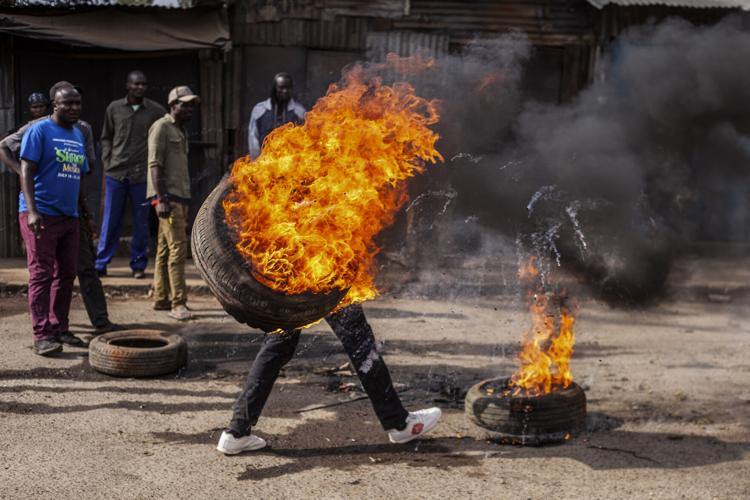
Major cities in Kenya experienced skirmishes as three days of protests against the high costs of living and tax hikes began on Wednesday. Kenyan protesters threw rocks at police, who responded with volleys of tear gas in an effort to disperse the crowds.
At the entrance to the Kibera neighborhood in Nairobi, where protesters ignited tires and clashed with security forces, dozens of riot police and two water-cannon trucks were strategically stationed.
As a result of the ongoing protests, schools were shut down in Nairobi, Mombasa (the port city), and Kisumu (the country’s third-largest city).
The capital city center, Nairobi, appeared deserted, with numerous closed businesses. Police set up checkpoints along the roads leading to President William Ruto’s official residence.
According to a private sector lobby group, the ongoing protests have resulted in a daily economic loss of over $20 million this year.
A tweet from a television station controlled by the opposition party Azimio La Umoja, led by Raila Odinga, stated that his spokesperson had been arrested.
During two rounds of protests earlier this month, a minimum of 15 individuals lost their lives, and hundreds were arrested. The police resorted to using tear gas, and in certain instances, even live rounds were fired at the crowds.
One of the reasons behind Azimio’s call for the protests was the recent implementation of tax hikes by the government led by Ruto.
Despite Ruto being elected last August with a pledge to advocate for the interests of the impoverished, the prices of essential goods have escalated during his administration.
The government says the imposition of levies on fuel and housing, estimated to generate an additional 200 billion shillings ($1.4 billion) annually, is needed to address mounting debt repayments and support job-creation endeavors.
